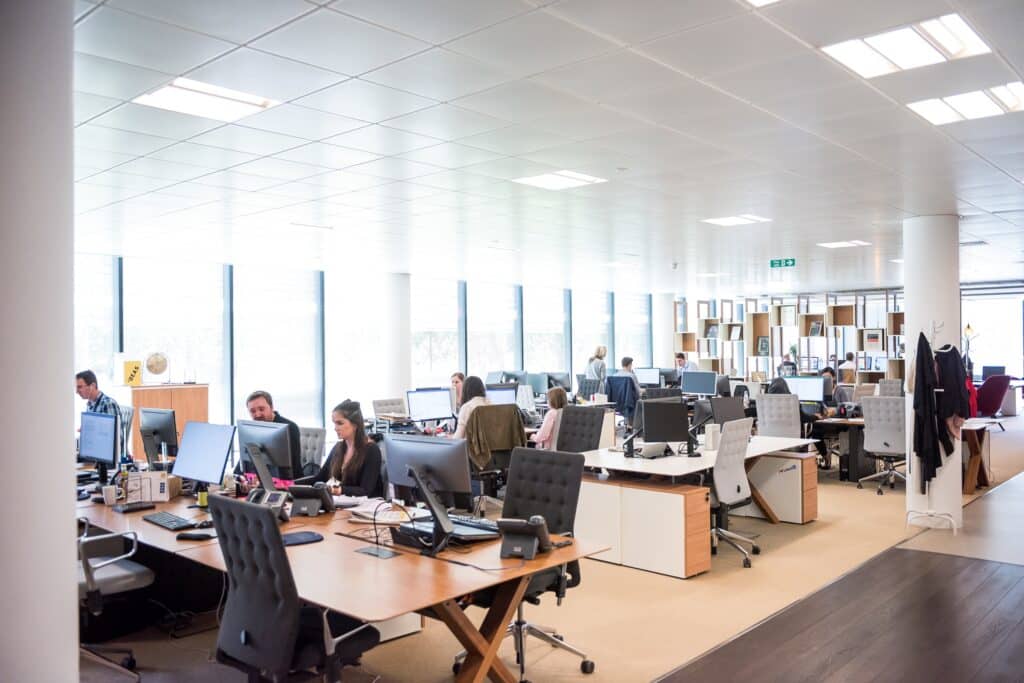If you work in your home country or you are far away and have to get used to another culture at the workplace, safety at work is essential … wherever you are located. Safety at work is not only focused on people who have a very physical job, but needs to be seen as a much broader topic. As there might be some differences across the world on what is seen as a healthy work environment, we will give you advice and information to keep yourself as healthy as possible, both physical and emotional.
Occupational health should be understood as the achievement of the best possible environment in the place where people carry out their work. We know that in society, work occupies an important part of our time. And that work is not only “what is done” but also “under what conditions it is done”.
The aspects to take into account in workers’ health
The best possible working environment means that, in the workplace, the worker has the conditions and material resources to be able to carry out all aspects of his or her work and where optimal health and safety conditions can exist. Let us now elaborate on each of these points.
- Workplace conditions include environmental and technological aspects, workload, and issues related to work organisation and organisation of work.
- The work environment takes into account physical factors such as the background noise or sound that may exist, the quality of the air, the temperature of the workplace, the physical space or area where the work takes place, the hygienic conditions of the workplace; and, crucially, the relationship with other employees and senior managers.
The work environment has a direct influence on the physical and mental well-being of the worker. If there is a good working environment, the worker will be motivated and feel comfortable, and will therefore be able to give maximum performance at work.
But a work environment where the worker has to do not one but several tasks, where he lacks recognition and support from his boss or even from other workers, where he has long working hours; where the work area is not well ventilated and illuminated,… can translate into poor work performance, a greater possibility of generating errors or mistakes, a higher rate of absenteeism, a higher degree of work stress (and, especially, the appearance of burn-out syndrome), and a possible appearance of certain ailments or illnesses.

- Material resources include the set of materials, tools, machines, equipment and any other physical element that the worker requires to carry out his/her work activity. It should be borne in mind that monotonous and repetitive work is a cause of demotivation and distraction on the part of workers.
- An interesting aspect refers to the ergonomic conditions of the workplace. These are the set of aspects to be taken into account so that the elements of the workplace are adapted or adapted to the needs, limitations and characteristics of the worker, optimising the efficiency, safety and well-being of the worker. Ergonomic conditions are those that perhaps have the greatest influence on the health of the worker. Several studies show that forced postures in certain work activities can cause musculoskeletal disorders in the worker, which lead to absenteeism.
- Psychosocial factors at work affect the physical, psychological and social health of the worker. Psychosocial risks at work are those caused by poor organisation and management of tasks and by a negative social environment (relations with other people at work).
The main psychosocial risk factors at work include factors derived from the company itself, which include the organisation of work, the company’s philosophy and the relationship it wants workers to have with themselves and with their managers. And the factors that are work-related, which we have indicated in previous paragraphs, such as the conditions of employment, the conception of the job and its quality, among others.
The main psychosocial problems that affect the worker if some of these risk factors appear and are not corrected include:
- Stress, which, when it becomes chronic, can lead to burn-out.
- Workplace violence, both physical and psychological.
- Harassment at work.
- Sexual harassment.
- Insecurity or constant worry due to the instability of work and changing working conditions.
- An aspect that is not usually considered in the psychosocial elements of the worker is the family-work conflict that may exist.

Why is good occupational health important?
Workers’ health has not always been taken into account. Accidents at work, which can be fatal or result in disabling injuries, have led to the promotion of workers’ occupational health.
When faced with the relationship between work and health, the negative effects (damage to health) are of greater concern, but there is also a positive relationship, which makes work a basic component of people’s well-being.
The negative effects of work are:
- Injuries due to accidents at work
- Occupational diseases
- Work-related illnesses
- Incapacity for work.
The prevention of the negative effects of working conditions is the main objective of occupational health today.
The positive effects of work are:
- Reduction of absenteeism
- Increased motivation & productivity
- Improvement of the company’s image (becoming a company that cares about its employees)
What aspects should be taken into account to improve occupational health?

Health conditions in the workplace must take several aspects into account:
- The maximum physical and mental well-being of the worker.
- The identification and elimination (or modification) of work-related factors that may have a detrimental effect on the worker’s health.
- The enhancement of factors with a beneficial effect on the health and well-being of the worker.
- The minimisation or, if possible, elimination of the risks of illness or injury arising from the workplace.
- The prevention of diseases known to be caused by or related to a particular workplace.
Occupational health is a multidisciplinary field of action. Thus, the achievement of these objectives must involve the employer, the employee himself as well as a specific occupational health team.
Safety at work
In each and every job there is a greater or lesser risk of losing one’s health. An obvious example of this is the construction worker, whether it be erecting roofs, climbing scaffolding or lifting platforms, digging trenches… Safety at work is part of occupational health and consists of the reduction and/or elimination of the risk factors of having an accident at the workplace or on the way to the workplace (in itinerary accidents at work) or of becoming ill as a result of working at the workplace.
For this purpose, the factors that can potentially cause accidents and illnesses must be controlled by reducing the risk conditions.
What are the principles of preventive action?
Prevention or preventive action is understood as the set of activities or measures adopted, or planned, in all phases of the company’s activity, with the aim of avoiding or reducing the risks arising from work.
The risks are different for different employees in the same company and for employees in other companies or activities. To give you an idea of what you as an employee can discuss with your employer we´ll explain to you the principles of preventive action:
- Avoiding risks: The best way to do this is to stop the activity, but the feasibility of this measure may be limited.
- Assess risks that cannot be avoided: Combat risks at source.
- Adapt the job to the person: Adapt the job to the person rather than adapting the person to the job.
- Consider the evolution of technology: The evolution of technology can lead to the appearance of new machines, substances, tools, methods, etc., which make it possible to carry out work in a more comfortable and safer way for employees.
- Substitute the dangerous: Replace dangerous elements with others that pose little or no danger. A very frequent application of this principle can be seen in the continuous elimination of lead as a pigment in paints and the substitution of solvent-based paints for water-based paints.
- Planning prevention: To this end, a coherent whole must be sought which integrates technology, work organisation, working conditions, social relations and the influence of environmental factors on work.
- Put collective protection before individual protection: Take appropriate measures. Any addition to a person’s normal clothing is a source of discomfort and personal protective equipment should therefore be avoided.
- Instruct workers properly: If workers are told what to do without being told how to do it safely, the instruction is insufficient.
- When assigning tasks, take into account the health and safety capabilities of the workers. The employer shall consider the knowledge, physical and mental condition of workers when assigning tasks.
- Restricted access to areas of serious and specific risk: Only persons who have the necessary information and training to know how to act may have access to these areas.
- Anticipate distractions or non-recklessness that may be committed by the worker in order to adopt the most effective preventive measures. For the safe design of workstations, it is essential to consider involuntary movements, reflex movements, distractions or imprudence that may be committed by workers.
- Avoid the greatest risk: The preventive measures adopted must not pose a greater risk than the one they are intended to avoid.
The responsibility for carrying out preventive actions lies with the employer, for which they shall adopt one of the methods of organising resources provided for in the regulations in force. In addition, the employer must have the consultation and participation of the workers, for which, beforehand, they must ensure that they are properly trained. But you as an employee are also responsible: employees must be aware of the risks to their health and safety posed by the environment in which they work and the measures they must take to avoid them. For this reason, they must receive theoretical and practical training on the general and specific risks and the preventive measures to be adopted in their workplace.
The prevention regulations also establish the participation of workers in all those aspects that concern their health and safety at work, and a figure for their representation: the prevention delegates.
If you are suffering from any physical issues cause during work or outside of work, please do not hesitate to connect to a doctor. Through the telemedicine portal you have online access to a doctor within hours directly by phone or by planning a video consultation.


